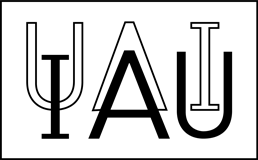Supported by:




Black holes are observed to drive powerful outflows on both stellar and galactic scales. The connection of the outflow to the accretion flow that feeds the black hole remains contentious. The physical launching mechanisms and astrophysical sites from which these outflows are launched also remain in debate; radiation, magneto-hydrodynamics, and thermal driving have all been proposed and modeled, with no consensual conclusion.
Beyond their physics, the study of outflows is important for understanding how they affect their environment and host galaxy. The means by which outflows interact with their surroundings manifests itself in all wavelengths. Some examples of which are X-ray and UV ionized absorbers and obscurers, ultra-fast outflows at a fraction of the speed of light, massive molecular outflows, and extended radio emission. Despite significant progress in multi-wavelength observations, a coherent picture of black hole outflows has yet to emerge.
The goal of the IAU symposium in Haifa is to better understand black hole winds by seeking common physical grounds for different outflows, in both stellar (X-ray binaries) and AGN (active galactic) black holes, in all wavelengths, and in the context of competing theoretical models. The connection of the winds to star formation, galactic feedback, and relativistic jets will be discussed among observers, modelers, and theoreticians.
This is a timely symposium given the progress that is being made with new and upcoming observing facilities such as JWST (James Webb Space Telescope) and XRISM (X-Ray Imaging Spectroscopy Mission), but also with the large-sample data from existing observatories such as Chandra, XMM Newton, Nustar, and NICER in X-rays; HST and ground based telescopes in the optical and UV, along with new instruments such as MUSE, MEGARA, and Simphoni; ALMA, and NOEMA in the mm; New facilities such as WSRT/APERTIF, and the SKA precursors, MeerKAT, ASKAP and MWA in the radio.
The key topics and questions to be discussed in the various sessions of the symposium are:
We invite you to join us in Haifa to discuss these exciting topics with the best experts in the world.
